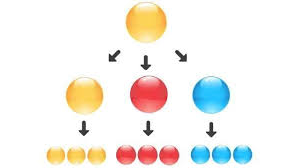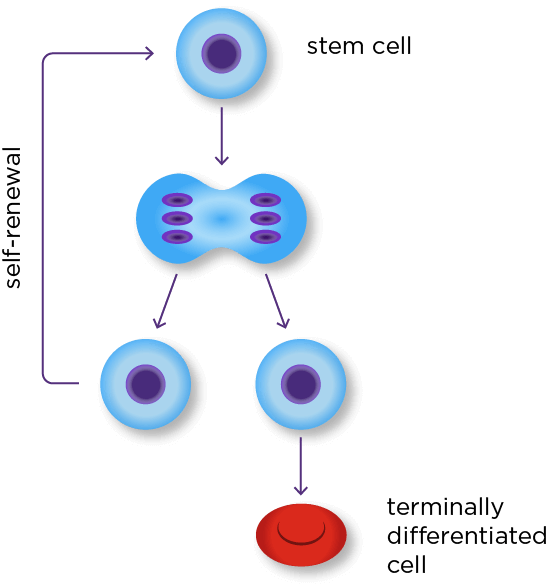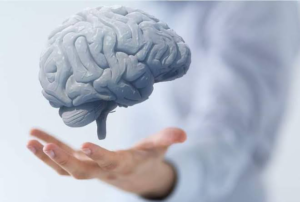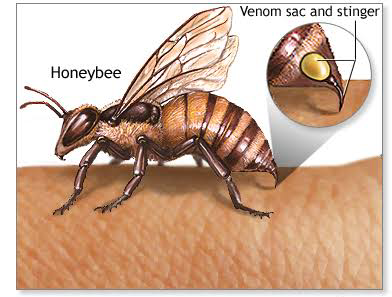
Stem cells are undifferentiated cells of the body that has the ability to develop into different kinds of body cells like liver cells, bone cell, kidney cells etc. They are the earliest type of cell in the cells linage.
Stem cells are different from progenitor cells which cannot divide indefinitely. It is also different from precursor or blast cells, which are usually committed to differentiating into one cell type.
Characteristics of Stem Cells
Every stem cell must have these two properties to be called a stem cell
Potency
This is the ability to differentiate into a specialized type of cell. We have three major categories of potency, there are; totipotency, pluripotency, and multipotency.

Totipotent cells are capable of differentiating into every cell type of a particular organism in addition to the extraembryonic tissues. An example of totipotent cells is those produced upon the fusion of a sperm and an egg up to the stage of a morula(16 cell stage).
Pluripotent cell have the ability to develop into the three primary germ cell layers of the early embryo. Therefore into all cells of the adult body , but not extra-embryonic tissues such as the placenta. Embryonic stem cells and induced pluripotent stem cells are characterised by their pluripotency.
Multipotent stem cells are cells that have the capacity to self-renew by dividing and to develop into multiple specialised cell types present in specific tissue or organ. Haematopoietic stem cells are an example of multipotent cells.
Self Renewal
This is the ability to go through numerous cycles of cell growth and cell division (proliferation), while maintaining the undifferentiated state.

What are the types of stem cells?
There are different types of stem cells based on where they are found.
Embryonic Stem Cells: Embryonic stem cells come from the embryos that are three to five days old. At this stage, an embryo is called a blastocyst and has about 150 cells. They are pluripotent meaning they can differentiate to any kind of cell.
Adult or Somatic Stem Cell: They are seen in some adult tissues like the brain, marrow or fat. They replace and repair damaged cells.
Adult stem cells are said to be multipotent, which means they can only change into some cells in the body, not any cell, example, Blood (or ‘haematopoietic’) stem cells can only replace the various types of cells in the blood.
Induced Pluripotent Stem Cells(IPS): These are adult stem cells that has been induced in the laboratory to behave like the embryonic stem cells.
Cord Blood Stem Cells: Cord blood stem cells are harvested from the umbilical cord after childbirth, they can produce all the other cells found in blood, including cells of the immune system. Also, they can also be frozen in cell banks for use in the future.
Amniotic/Perinatal Stem Cells: Stem cells have also been found in amniotic fluid. This is the fluid that surrounds a developing baby inside the mother’s womb. However, more research is needed to help understand the potential uses of amniotic fluid stem cells.
also read: Ectopic Pregnancy, Signs and Symptoms, Causes, Treatment and Preventions
The Major causes of Breast Cancer Everyone Ignores
Advantages of Stem Cell Technology
In modern medicine, stem cells have been used in so many ways for the benefit of man. Which includes the following;
- Treatment of diseases like, brain disease, cardiovascular disease, blood disease, etc.
- Grow new cells in a laboratory to replace damaged organs or tissues(Tissues regeneration).
- Correct parts of organs that don’t work properly.
- Research causes of genetic defects in cells.
- Research how diseases occur or why certain cells develop into cancer cells.
- Scientists are looking forward to use stem cells technology to arrest aging in human beings.
Related posts: Natural Methods To Control Your Breast Size Without Surgery
Naturally Ways In Nigeria To Increase Estrogen Levels
How to use Zobo Drink as an Emergency Contraceptive
Proven Simple Steps To Lose Belly Fats
Side Effects Of Skin Bleaching Everyone Should Know







Leave a Reply